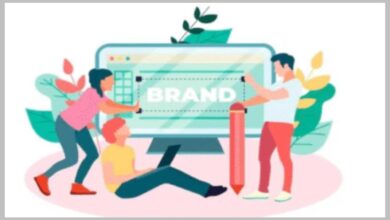In today’s competitive business environment, understanding and leveraging key metrics and resources can significantly impact a company’s success. One of the most valuable metrics is how much a customer contributes to a business over their entire relationship, while effective sales enablement can streamline processes and boost performance. Here’s a closer look at how using the right tools and strategies can drive growth and efficiency in your organization.
Table of Contents
The Importance of Measuring Customer Value
A critical aspect of managing a successful business is understanding the value each customer brings to their entire relationship with the company. This is where a customer lifetime value calculator becomes essential. By calculating this metric, businesses can gain insights into how much revenue a customer is expected to generate throughout their association with the company.
The customer lifetime value (CLV) is not just a number; it provides strategic insights into customer acquisition and retention. Knowing the CLV helps businesses allocate their marketing budgets more effectively, tailor their customer service strategies, and identify which customer segments are the most profitable. For example, if the calculator indicates that certain customers are likely to generate higher revenue, businesses can prioritize their efforts on retaining and nurturing these high-value customers, ultimately enhancing overall profitability.
Leveraging Sales Enablement Assets for Efficiency
Effective sales enablement is crucial for equipping sales teams with the resources they need to succeed. Sales enablement assets refer to the various tools and materials that support sales professionals in their efforts to engage with prospects and close deals. These assets include things like product brochures, case studies, sales training materials, and CRM tools.
Implementing comprehensive sales enablement strategies can significantly improve the efficiency and effectiveness of a sales team. For instance, having access to well-designed sales enablement assets ensures that sales representatives are well-prepared with accurate information and persuasive content when interacting with potential customers. This preparation can lead to more successful sales conversations, higher conversion rates, and ultimately, increased revenue.
Integrating CLV and Sales Enablement Strategies
Combining the insights from a customer lifetime value calculator with effective sales enablement assets can create a powerful synergy that drives business growth. By understanding which customers have the highest lifetime value, sales teams can tailor their approach and focus their efforts on those high-value segments. This means using sales enablement assets to address the specific needs and preferences of these customers, thereby improving engagement and increasing the likelihood of successful outcomes.
For example, if the CLV calculator identifies a segment of customers who frequently purchase high-value items, sales teams can use targeted sales enablement assets—such as customized product recommendations or exclusive offers tailored to these high-value customers. This targeted approach helps in creating a more personalized experience, which can lead to higher customer satisfaction and loyalty.
Measuring and Optimizing Performance
To fully realize the benefits of integrating CLV insights with sales enablement strategies, businesses need to continually measure and optimize their performance. Regularly reviewing the data provided by the customer lifetime value calculator helps businesses stay informed about shifts in customer behavior and value. Additionally, tracking the effectiveness of sales enablement assets ensures that they remain relevant and impactful.
Continuous optimization involves adjusting marketing and sales tactics based on the insights gained from these tools. For instance, if certain sales enablement assets are found to be particularly effective with high-value customers, they can be used more extensively, while less effective materials can be refined or replaced.
Conclusion
Understanding customer lifetime value and effectively utilizing sales enablement assets are both critical for achieving business success. By using a customer lifetime value calculator, businesses can gain valuable insights into customer profitability and make informed decisions about resource allocation and customer engagement. Simultaneously, leveraging well-crafted sales enablement assets ensures that sales teams have the tools they need to perform at their best. Integrating these strategies allows businesses to enhance their performance, improve customer relationships, and drive long-term growth.
Visit for more best articles





